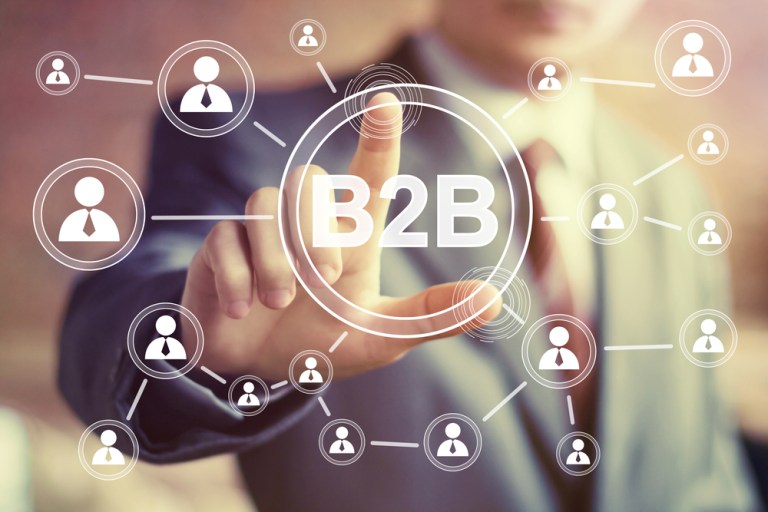
In a perfect world, some might argue, paper checks wouldn’t exist. Payments would be fast — instant even — and accounts payable and accounts receivable would align, allowing all businesses to be on the same financial page with their cash flow.
Reality, of course, is far from this utopia.
Payment processing firm iStream first launched more than a decade ago to provide its Remote Deposit Capture technology for companies that need to collect payments in the field in the form of checks. All these years later, the paper check still hasn’t died out, and iStream Director of Marketing and Strategic Partnerships Tom Cunningham doubts it will anytime soon.
Cunningham spoke with PYMNTS about the endurance of the paper check in B2B payments and dropped a few other reality bombs on an industry challenged with achieving greater electronic payment adoption.
“For years, people have said checks are going to die,” said Cunningham. “They’re slowing down a bit, but they’re not going anywhere anytime soon.”
In addition to checks remaining prominent “across the spectrum” of organization types and sizes, Cunningham said, the reality is that businesses will continue to pay in paper check, even if the recipient doesn’t want to.
“If you’re on the recipient side, no one wants to receive a paper check, whether it’s business-to-business or payroll,” he stated. “You want it directly in your account. But, on the paying side, you appreciate, sometimes, depending on the cash flow situation, the extra couple of days you get.”
He added that the notorious lag time between when a paper check is written out to when it’s deposited to when it’s processed can, of course, be a headache to the recipient but can be a helpful extension of cash flow for the payer.
Here’s another reality check for B2B payments: Despite all of the other payment options out there, including ACH and credit cards, misconceptions about these rails persist, and that’s also contributing to the longevity of the paper check.
Cunningham pointed to some of iStream’s own clients, for example, reluctant to change their ways.
“We have a lot of clients that don’t want to get involved in the ACH space,” he said. “They still want a manual bill, and they still want to send us a check.”
He clarified that this is only a minority of the company’s clients but added that many of them are in the health care and insurance spaces.
According to Cunningham, these clients have a fear that ACH and direct deposit mean someone else has direct access to the business bank account. “Perhaps it’s a lack of understanding,” the executive said, that these companies are ill-informed regarding how ACH works. But there’s also a “historical familiarity” with the paper check that fuels its use, he said.
A final dose of reality the executive offered is perhaps the most significant: Payers want to be in control.
That manifests in different ways. For instance, despite the persistence of the paper check, Cunningham said the vast majority of companies want options when choosing the way they pay.
On top of credit cards and paper checks, for instance, adding an ACH payment option can introduce a less expensive way to get paid. “If you’re giving someone a third option to pay that you didn’t before and people choose it, that’s much less expensive than if they pay with a card for 2.5 to 3 percent of that dollar amount,” Cunningham said, referencing the interchange fees connected to card products.
“By giving the payer the option, it’s streamlining the payment process, and you can steer them down your preferred method,” he continued.
Corporations also want control over who they’re doing business with. Sure, an alternative financial service provider might have a better way of doing business, but that doesn’t mean a client will, all of a sudden, drop its relationship with its bank, Cunningham explained.
“From a personal standpoint, no one wants to change bank relationships,” he said. “Quite honestly, it’s a big hassle, and from the corporate level, it’s exponentially challenging.”
But the executive added that iStream’s corporate clients make clear that they don’t plan on ditching their FI.
“If you have a conversation about payments with a controller or CFO, often the first comment we hear is, ‘Well, I have a great relationship with my financial institution,’” Cunningham explained.
This is key for financial services providers, especially those operating as bank alternatives: Legacy systems are here to stay. Paper checks may be sluggish, but whether through habit or misinformation about newer payment rails, they persist. Corporates are sticking with their banks, whether it’s because they value the relationship or simply don’t want to deal with switching providers.
Understanding this, Cunningham said, has led iStream to develop solutions that work around these realities. A mobile deposit capture solution, for example, can support businesses’ use of a paper check, while speeding up the AR cycle and digitizing that check for the recipient. Plus, the executive said, iStream focuses on being “bank-agnostic,” a label he explained allows clients to keep their banks but change the process of how they do payments.
IStream will be fueling its solutions to the realities of B2B payments in the U.S. thanks to a new collaboration with Top Image Systems, announced earlier this week. And while the company can’t magically make corporates understand the value of ACH or the friction of paper checks, it can work around the actualities of the market that are probably here to stay.